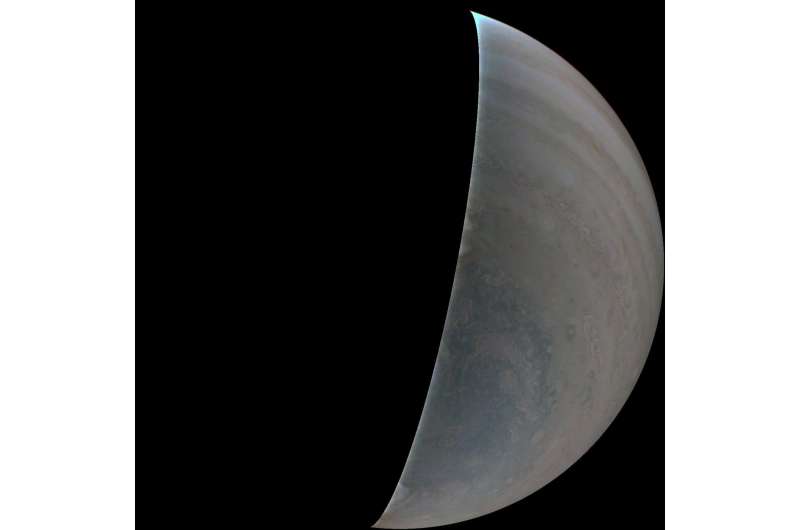Jupiter’s southern hemisphere was captured by the JunoCam imager aboard NASA’s Juno orbiter after the camera returned to normal operation following an issue that occurred during its Jan. 22, 2023, flyby. The image was acquired at an altitude of 77,507 miles (124,735 kilometers) at a resolution of 52 miles (84 kilometers) per pixel. Credit: NASA/JPL-Caltech/SwRI/MSSS
Engineering data is being evaluated to determine why the majority of images taken by the solar-powered orbiter's JunoCam were not acquired.
The JunoCam imager aboard NASA's Juno spacecraft did not acquire all planned images during the orbiter's most recent flyby of Jupiter on Jan. 22. Data received from the spacecraft indicates that the camera experienced an issue similar to one that occurred on its previous close pass of the gas giant last month, when the team saw an anomalous temperature rise after the camera was powered on in preparation for the flyby.
However, on this new occasion the issue persisted for a longer period of time (23 hours compared to 36 minutes during the December close pass), leaving the first 214 JunoCam images planned for the flyby unusable. As with the previous occurrence, once the anomaly that caused the temperature rise cleared, the camera returned to normal operation and the remaining 44 images were of good quality and usable.
The mission team is evaluating JunoCam engineering data acquired during the two recent flybys—the 47th and 48th of the mission—and is investigating the root cause of the anomaly and mitigation strategies. JunoCam will remain powered on for the time being and the camera continues to operate in its nominal state.
JunoCam is a color, visible-light camera designed to capture pictures of Jupiter's cloud tops. It was included on the spacecraft specifically for purposes of public engagement but has proven to be important for science investigations also. The camera was originally designed to operate in Jupiter's high-energy particle environment for at least seven orbits but has survived far longer.
The spacecraft will make its 49th pass of Jupiter on March 1.
More information: More information about Juno is available at: www.nasa.gov/juno
Provided by NASA
























